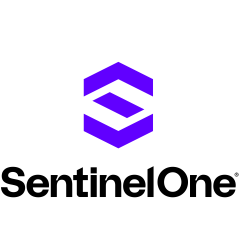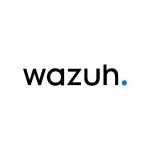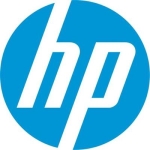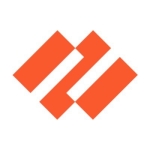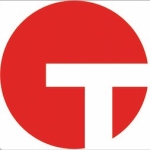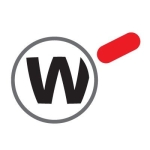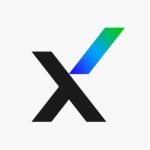What is our primary use case?
First and foremost, we use SentinelOne Singularity Complete for endpoint detection and response in our company. We do not have any antivirus anymore. We have SentinelOne for the endpoint detection, response, and defense mechanism. This is our primary use case.
We also have other use cases. I work predominantly in vulnerability management. I sometimes work in the SOC. For vulnerability management, we use it in a number of different ways. We sometimes use it to see which applications and versions are running on systems. We use it for an inventory of applications. We do not use it for vulnerability detection. We have another tool for that, which I believe is more dedicated to technical vulnerabilities. I know there has been some investment in this area, but at the moment, we are not using it for that.
We also use it for running scripts and automating tasks on systems. In fact, I have been doing a lot of that recently. They have developed their automation and remote ops part, which has been fantastic for us. I have been updating a lot of applications using the scripts that I have deployed with SentinelOne. I love that part of the tool. It makes life a lot easier.
I sometimes also use it to determine where we may not have other pieces of software on systems. For example, we use a vulnerability tool that runs on an agent. I can use SentinelOne to see whether all of the systems on which we have SentinelOne also have our vulnerability tool agent. If a system does not have it, we can deploy a script from SentinelOne to add the agent.
We also use Ranger, so we can identify other systems on our network that do not necessarily have SentinelOne agents. That can be quite useful sometimes. Because of Ranger, we have seen a lot of systems that we did not already know about.
As a part of the endpoint detection response, we ingest logs through our central SIEM. We have a hybrid Security Operations Center. The first line is done by a third party. They have access to the SIEM, and all of the SentinelOne data is ingested into that. When there is an incident or when SentinelOne detects an incident, it gets flagged to the Security Operations Center, and then we start to investigate that incident. Most of the time, if it is a SentinelOne-related incident, we will log in to SentinelOne and use it to investigate the incident. We look at the logs on the endpoint and try to establish whether it is a genuine incident or a false positive, what happened on the system, and why we are getting these alerts.
How has it helped my organization?
We use the Ranger functionality. It provides network and asset visibility. It is quite important for us. If we did not have another tool that is doing similar, it would have been extremely important, but we do have a vulnerability management tool that is very similar. It is quite good that it does that automatically out of the box, whereas we have to configure our vulnerability scanning solution to do something like this. The ability to have visibility of the network where we do not necessarily have SentinelOne deployed is very important.
Ranger requires no new agents, hardware, or network changes. This is important for us. It has an advantage over our vulnerability management tool because we have to deploy scanners with our vulnerability management tool, whereas we do not have to deploy anything for SentinelOne Ranger, so in that way, it is a better solution in helping us.
Ranger is very effective in helping to prevent vulnerable devices from becoming compromised. For example, we used Ranger and identified some systems in our data center that we could just log on to. It was not very difficult to get on to those devices. Therefore, it would not have been difficult for anyone else to get on those devices. We did not necessarily have the permission to do so, but we found a way to do that. We managed to get those devices secured, and therefore, increase the security of our systems. That kicked off from Ranger, and that is a good use case.
Singularity Complete has helped free up our staff for other projects and tasks. For example, with automation, I have been able to patch some of our systems, which has freed up time for our help desk team. They do not have to patch some of the systems. It has also been helpful for deploying some of our agents for our other tools. If we deploy through SentinelOne using the script, that frees up our team's time.
Singularity Complete has helped reduce our organizational risk. The previous solution we had was signature-based, so for endpoint detection, it has to know a certain kind of attack before it can detect it or even block it. Because Singularity Complete is more looking at the behavior of running processes and how these processes interact with other processes on the system, it has helped to reduce the risk. We are not relying on static detection signatures. We have got real-time detection. Singularity Complete can detect things that may be the first-ever attack in the world, and we get notified about it. It does reduce the risk.
What is most valuable?
I work in vulnerability management, and for me, at the moment, its automation is most valuable. For the SOC team, incident visibility would be most valuable, but for me, it is automation.
What needs improvement?
In automation, if we could schedule when we run the task and on which systems we want to run the task, it would improve automation.
For how long have I used the solution?
I have been using this solution for two and a half years. I have been using it since I joined this company.
What do I think about the stability of the solution?
We have not had any issues with it. It has always worked for me.
What do I think about the scalability of the solution?
It is quite scalable. I do not see anything holding it back in that regard.
How are customer service and support?
My impression of SentinelOne as a strategic security partner is very positive.
In terms of support, for a lot of support requirements, I go through the engineering team. They are very knowledgeable about Singularity Complete, but I did contact SentinelOne's support team recently in July. There was a particular vulnerability that Microsoft had already caught. Microsoft Defender had a setting that would automatically block the vulnerability. I raised the question to SentinelOne support asking whether SentinelOne has the same ability to block the vulnerability. It took me a few times to get them to understand what I was asking, and they could not confirm 100% that it was blocked. They just said that their solution does block vulnerability attempts, but they did not specifically do this particular one. Unfortunately, that interaction was not entirely positive. Overall, I would rate them a seven out of ten.
How would you rate customer service and support?
Which solution did I use previously and why did I switch?
My company had an endpoint solution previously, but I was not with this company before they had Singularity Complete. They already had Singularity Complete when I got here. It was replacing the previous endpoint solution, so I cannot say whether Singularity Complete reduced our alerts or mean time to detect than the previous solution.
How was the initial setup?
I was not involved in its initial deployment. I am with the engineering team. I have deployed SentinelOne on some systems, so I know the process, but I was not involved in deploying it or rolling it out company-wide.
It is in the cloud, but we have SentinelOne agents deployed on our systems. These agents report the data back to the cloud, which gives us the ability to see all of that data.
In terms of maintenance, the team that maintains it performs agent updates. They can be pushed automatically, but our engineering team has decided to not push the updates automatically because they could potentially break something or may not be fully compatible with a current version of, for example, macOS. There is some maintenance in that regard. There is also maintenance in terms of relieving some aged SentinelOne nodes. We might remove those. I would not necessarily call it maintenance, but when we set up particular alerts, we may maintain those alerts based on our requirements at the time. It may be the vulnerability being escalated in the wild, or we might want to set up some sort of detection that can basically detect or indicate any compromise. We maintain all of those rules.
What's my experience with pricing, setup cost, and licensing?
I do not know much about the pricing. What I do know is that the person who negotiates most of the pricing is quite a hard bargainer. In that regard, he often says that he managed to get a very good deal. When we first looked at replacing our old system with Singularity Complete, its price was definitely a big factor. Back then, Singularity Complete was fairly new to the marketplace. We got quite a good deal as an early adopter. They have honored that and respected that we were an early adopter, and I feel we are still getting a very good price.
What other advice do I have?
It is definitely worth considering. It is definitely up there with the best of them now. A few years ago, it probably was not. It was in the early stages, but now, it gives us everything that we need today. They invest heavily in the platform. That is important as well. If you buy it today, in a year or two, you will get a lot more features for your money.
It is quite mature now. Over the two and a half years that I have been using it, there have been numerous feature enhancements. As a basic endpoint detection response, it is very mature, and it now has other features, such as the Ranger functionality and automation, on top of it. It is a very mature offering now.
When it comes to integrations, I do not know about any tools that I have used with Singularity Complete. We just bought Wiz.io for our company, and I understand that SentinelOne links to Wiz.io. I have not personally used it, but I will be using it soon. From what I understand, it is going to be quite useful because if we detect an incident or an alert on a cloud system that Wiz.io manages and has visibility of, we can then get more information about that cloud system. For example, it could say, "We detected that this vulnerability attempt has been made, or one of the exploit attempts has been made on your system." We then get all of this information from Wiz.io which says, "Actually, the system is not vulnerable to that vulnerability." At that point, we would think that we do not need to worry as much, but we are going to see the investigations.
In terms of its ability to ingest and correlate across our security solution, we do not necessarily ingest into Singularity Complete, but we ingest Singularity Complete into our central SIEM. It is very difficult to ingest data into that SIEM.
Overall, I would rate SentinelOne Singularity Complete an eight out of ten.
Disclosure: PeerSpot contacted the reviewer to collect the review and to validate authenticity. The reviewer was referred by the vendor, but the review is not subject to editing or approval by the vendor.

